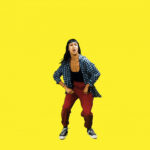Ballroom dance is a captivating art form with a rich tapestry of styles, each offering a unique rhythm and character. Whether you’re taking your first steps onto the dance floor or you’re a seasoned dancer looking to explore new horizons, understanding the different types of ballroom dance can significantly enrich your experience. This guide will walk you through a variety of styles, with a special focus on the exciting world of Latin Ballroom Dances.
A visual transition representing the diverse world of ballroom dance styles.
International Latin Dances: A World of Passion and Rhythm
Explore International Latin Dance Style in Detail
International Latin dances are renowned for their passionate energy, intricate footwork, and captivating storytelling. These dances are a thrilling spectacle, demanding both technical skill and artistic expression. Let’s delve into each of the five dynamic dances within this category:
1. Cha Cha: The Flirtatious Dance of Syncopation
The Cha Cha is a vibrant and flirtatious dance originating from Cuba. It’s characterized by a playful “cat and mouse” dynamic between partners. What sets the International Cha Cha apart is its distinctive breaking action on count “2”—a hallmark it shares with Rumba and Mambo—and the syncopated rhythm on counts “4&1,” often counted as “cha-cha-cha.” Unlike its American counterpart, the International Cha Cha is executed with a straight leg action throughout, lending it a sharp and precise aesthetic.
2. Samba: Embrace the Bounce and Brazilian Spirit
Inspired by the exhilarating Carnival dances of Brazil, the Samba is a celebration of rhythm and high energy. While traditional Brazilian Samba is often performed solo, the International Latin Samba captures the infectious rhythms and vibrant spirit of its origins in a partnered dance. Known for its signature “bouncy” quality, Samba features complex combinations of timings and rhythmic variations, making it both challenging and incredibly fun to watch and perform.
3. Rumba: The Romantic Narrative in Motion
The International Rumba, often called the “dance of love,” is the slowest of the International Latin dances musically, yet it’s rich with nuanced movements and emotional depth. Despite its slower tempo, Rumba incorporates alternating rhythms to create moments of both slow and quick motion within the dance. It’s a captivating dance style that frequently portrays a romantic narrative between partners. Similar to the Cha Cha, International Rumba distinguishes itself from the American Rumba with its straight leg action, emphasizing controlled and elegant movements.
4. Paso Doble: The Drama of the Spanish Bullfight
Surprisingly originating in France, the Paso Doble draws its dramatic inspiration from the Spanish bullfight. Many of its terms, like “apel” (a call to action), are French, reflecting its origins. Paso Doble is a powerfully theatrical dance where partners embody the roles of the Spanish Bullfighter (Matador) and either the Matador’s Cape or a Spanish Dancer. The dance is filled with strong shapes and dynamic movements, capturing the tension and drama of the bullfight arena.
5. Jive: The Energetic Finale of Latin
Concluding the International Latin category with a burst of energy is the Jive. This joyful and fast-paced dance is a fusion of various Swing styles, including East Coast, West Coast, Lindy Hop, and Jitterbug. Characterized by quick footwork, high kicks, and exciting tricks, the Jive is a crowd-pleasing spectacle that’s sure to get everyone moving. It’s the perfect way to end a Latin dance showcase with a high-spirited and unforgettable performance.
International Ballroom: Elegance and Grace in Motion
Discover International Ballroom Dance Style
Shifting from the fiery rhythms of Latin to the graceful movements of International Ballroom, we encounter a set of dances defined by elegance, poise, and continuous partnership. These dances, performed in a closed hold, showcase a different facet of ballroom artistry.
6. Waltz: The Classic Ballroom Dream
The International Waltz is the quintessential “ballroom dance,” evoking images of fairytale balls and timeless romance, much like Cinderella’s dance. Recognizable by its signature “1-2-3” count, the Waltz is danced in a closed hold throughout, maintaining a constant connection between partners. This unbroken frame is a defining characteristic of all International Ballroom dances, emphasizing partnership and fluid movement across the floor.
7. Tango: Passion and Precision in Every Step
The Tango, in its International Ballroom form, is a dance of passion and intensity, marked by staccato movements and powerful leg actions. Unlike other International Ballroom dances, Tango dancers maintain a flatter posture without “body rise,” creating a more grounded and linear appearance. This, combined with varied dance positions and distinct footwork, highlights the technical nuances that set Tango apart within the International Ballroom repertoire.
8. Viennese Waltz: The Whirlwind of Romance
Originating from Vienna, Austria, the Viennese Waltz is considerably faster than the standard Waltz, often leading to the latter being referred to as the “Slow Waltz.” Comprising only seven basic figures, the Viennese Waltz focuses on creating expansive, flowing movements that seem to effortlessly glide and rotate around the dance floor. It’s a dance of continuous motion and sweeping elegance.
Learn How to Dance Viennese Waltz
9. Foxtrot: Smoothness and Flow Like Ocean Waves
The Foxtrot, in its International Ballroom interpretation, embodies a smooth and jazzy character, moving with an ebb and flow reminiscent of ocean waves. The dance is characterized by intricate rise and fall actions, achieved through precise footwork. Anecdotally, Foxtrot is often considered the most technically challenging of the Ballroom dances due to its demanding smoothness and control.
10. Quickstep: Lightness and Agility on the Dance Floor
Quickstep is a dance of exuberance and agility. Imagine leaps, kicks, and rapid steps across the floor, all while maintaining a close connection with your partner. Quickstep dancers navigate the floor with remarkable skill, weaving in and out of patterns with speed and precision. It’s a testament to partnership and spatial awareness, often likened to playing “Tetris” on the dance floor due to its complex navigation.
American Rhythm: A Fusion of Styles and Sounds
Explore American Rhythm Dance Style
American Rhythm dances bring a vibrant and versatile energy to ballroom, blending Latin influences with Swing and other American social dance elements. This style is characterized by its rhythmic complexity and expressive freedom.
11. Cha Cha: Bent-Leg Action and American Flair
The American Rhythm Cha Cha distinguishes itself from its International counterpart with a bent-to-straight leg action, a defining feature of the American style. While the figures in both styles share similarities, they often have different names and are performed with slightly varied techniques. The American Cha Cha maintains the playful spirit of the dance but with a uniquely American rhythmic interpretation.
12. Rumba: Upbeat and Energetic with Cuban Action
American Rumba is an engaging blend of International Cha Cha and Rumba elements, resulting in a dance that is faster and more dynamic than the International Rumba. Danced with a bent-to-straight leg action, American Rumba is upbeat and emphasizes strong hip movements known as “Cuban Action,” adding a distinct flair and sensuality to the dance.
13. East Coast Swing: Classic American Cool
The American Swing, often referred to as East Coast Swing, emerged on the North American East Coast in the early 20th century. While less bouncy and slightly slower than the Jive, East Coast Swing retains a fun and invigorating energy that makes it a consistent crowd-pleaser. Its grounded style and relaxed rhythm make it accessible and enjoyable for dancers of all levels.
Learn How to Dance East Coast Swing
14. Bolero: Melodic Flow and Romantic Expression
Bolero is a unique and expressive dance that combines aspects of the American Waltz and International Rumba. Merging the rise and fall of Waltz with the romantic character of Rumba, Bolero creates a dance with exceptional flow and lyrical quality. Think of Bolero as a Rumba infused with the graceful rise and fall movements of the Waltz, resulting in a beautifully melodic and romantic dance.
15. Mambo: Cuban Fiesta on the Dance Floor
Mambo, originating from Cuba, is synonymous with celebration and vibrant energy—it’s time for a fiesta! Featuring lively shimmies and shakes, Mambo typically breaks on count two and shares roots with Salsa and Cumbia. In social dance settings, Mambo interpretations can vary widely depending on regional and cultural influences, adding to its dynamic and evolving nature.
American Smooth: Freedom and Flourish in Movement
Discover American Smooth Dance Style
American Smooth dances offer a departure from the closed hold of International Ballroom, allowing dancers to explore open movements and expressive lines, blending International techniques with elements of Jazz and Contemporary dance.
16. Waltz: Openness and Modern Expression
The American Smooth Waltz retains the traditional “1-2-3” beat of the Waltz but embraces freedom of movement. Dancers can transition seamlessly from closed position to shadow position, side-by-side arrangements, and various other holds and proximities. This style integrates elements of Jazz and Contemporary dance, offering a more modern and versatile approach to the classic Waltz.
17. Tango: Argentine Roots and Dramatic Flair
Smooth Tango merges the intensity of International Tango with elements of classic Argentine Tango. Characterized by staccato actions, sharp lines, and dramatic changes in direction, Smooth Tango maintains the passionate essence of Tango while incorporating the open movements and varied holds of the Smooth style, creating a visually striking and emotionally charged dance.
18. Foxtrot: Jazz Age Charm and Upbeat Tempo
Made famous by Harry Fox, the Smooth Foxtrot embodies jazz-age charm and sophistication. Featuring smooth transitions and a slightly faster tempo than the International Foxtrot, Smooth Foxtrot has an upbeat and energetic quality. Think of the iconic duo Fred Astaire and Ginger Rogers to capture the bright energy and enthusiasm of the Smooth Foxtrot style.
19. Viennese Waltz: Emotional Storytelling and Fluid Positions
The Smooth Viennese Waltz is a flowing, emotional, and fast-paced dance that completes the American Smooth category. Significantly slower than the International Viennese Waltz, the Smooth version allows dancers more time to develop storytelling through a wide range of dance positions and styling variations. This emphasis on expression and fluidity makes it a captivating and emotionally resonant dance.
Learn How to Dance Viennese Waltz
Ballroom dance is more than just steps; it’s a passion, a community, and a journey of self-expression. At Dance Vision, we’re dedicated to enhancing your dance journey with top-tier instruction and unwavering support. Whether you’re practicing at home or in the studio, our resources are designed to be your perfect dance partner. Create a free account today and explore hundreds of dance classes, or upgrade to Premium for access to over 5,000 classes and unlock your full dance potential.
Happy Dancing! 🙂


